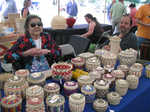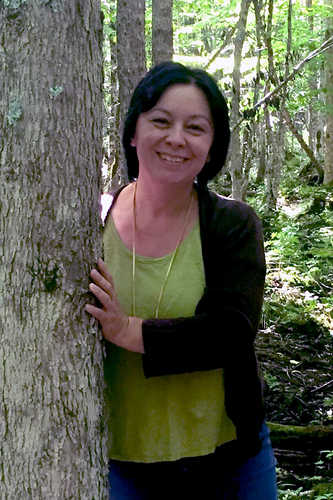Keywords: Passamaquoddy Nation
Item 135910
Compiled manuscripts regarding boundary disputes in Passamaquoddy Bay, 1817
Contributed by: Maine Historical Society
Date: 1817
Location: Saint John, NB, Canada
Media: Ink on Paper
This record contains 32 images.
Item 111300
Mary Mitchell Selmore, Sipayik, ca. 1900
Contributed by: Maine Historical Society Date: circa 1900 Location: Pleasant Point Media: Postcard
Item 151453
Barracks in Togus, Chelsea, 1900
Contributed by: Maine Historical Society Date: 1900–1935 Location: Chelsea; Eastport Client: Eastern Branch N.H.D.V.S. Architect: John Calvin Stevens and John Howard Stevens Architects
Exhibit
Redact: Obscuring the Maine Constitution
In 2015, Maliseet Representative Henry Bear drew the Maine legislature’s attention to a historic redaction of the Maine Constitution. Through legislation drafted in February 1875, approved by voters in September 1875, and enacted on January 1, 1876, the Sections 1, 2, and 5 of Article X (ten) of the Maine Constitution ceased to be printed. Since 1876, these sections are redacted from the document. Although they are obscured, they retain their validity.
Exhibit
For one hundred years, Acadia National Park has captured the American imagination and stood as the most recognizable symbol of Maine’s important natural history and identity. This exhibit highlights Maine Memory content relating to Acadia and Mount Desert Island.
Site Page
Portland Press Herald Glass Negative Collection - 1925 National Governors' Association Convention
"… Shenandoah, which took them from Bar Harbor to Passamaquoddy Bay, to Mt. Katahdin, Moosehead Lake, Rangley Lake, as well as various other locations…"
Site Page
Mount Desert Island: Shaped by Nature - Wabanaki Today
"Clara and Rocky Keezer, Passamaquoddy, selling their baskets at the Native American Festival, 2010. (Photo by Dee Lustusky) X Wabanaki dancers…"
Story
Translating 1890 Passamaquoddy Wax Cylinders
by Dwayne Tomah
Dwayne Tomah (Passamaquoddy) discusses the importance of 1890 recordings
Story
The story behind David Moses Bridges' basket
by Patricia Ayala Rocabado
The story behind David Moses Bridges' (1962-2017) birch bark basket
Lesson Plan
Nation to Nation: Treaties and Legislation between the Wabanaki Nations and the State of Maine
Grade Level: 9-12
Content Area: Social Studies
This lesson plan asks high school students to think critically about and look closely at documentation regarding the Nation-to-Nation relationship between the Wabanaki Tribes/Nations and the State of Maine. This lesson asks students to participate in discussions about morality and legislative actions over time. Students will gain experience examining and responding to primary and secondary sources by taking a close look at documents relating to the Maine Indian Claims Settlement Act of 1980 (MICSA) and the issues that preceded and have followed the Act.
Lesson Plan
Grade Level: 3-5, 6-8, 9-12
Content Area: Science & Engineering, Social Studies
This lesson plan will give middle and high school students a broad overview of the ash tree population in North America, the Emerald Ash Borer (EAB) threatening it, and the importance of the ash tree to the Wabanaki people in Maine. Students will look at Wabanaki oral histories as well as the geological/glacial beginnings of the region we now know as Maine for a general understanding of how the ash tree came to be a significant part of Wabanaki cultural history and environmental history in Maine. Students will compare national measures to combat the EAB to the Wabanaki-led Ash Task Force’s approaches in Maine, will discuss the benefits and challenges of biological control of invasive species, the concept of climigration, the concepts of Traditional Ecological Knowledge (TEK) and Indigenous Knowledge (IK) and how research scientists arrive at best practices for aiding the environment.
















